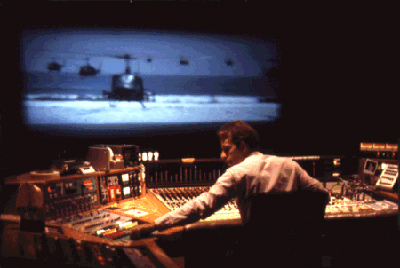While there are many film editing jobs available, it’s not always that easy to become a successful film editor. A great film editor works mostly behind the scenes and doesn’t take credit for the enormous amount of work they put in. The best film edits are ones that are seamless and where the editing is undetectable.
Skilled and successful editors take unorganized and mismanaged footage and turn it into a masterpiece. While film editors aren’t always on set during the filming of the movie or footage they’re working on, they have to perceive the directors vision well after filming is completed and provide a final product that the director will be happy with. Being in constant contact throughout the day with film directors is typical for editors. Unedited film is usually given to editors with instructions on how it needs to be processed. It’s usually provided digitally or by flash storage.
Editors spend most of their time planning and working on unedited footage with a goal in mind as how to the final product should look. They use a variety of video editing applications and film editors are typically extremely skilled in many aspects of computer use and Internet technology. Final Cut Pro, Adobe Premiere, and iMovie are some of the many applications film editor’s use on a daily basis. Not only are movies made from vast amounts of raw footage but a film editor has worked also almost every form of digital video media on the Internet on. From YouTube videos to commercials there is a high probability that the final footage has been edited and enhanced by a film editor.
Most editors usually work for a business or corporation and typically don’t have responsibility of the entire editing process. Different parts of the editing process are given to different people with varying skills so companies and business can be as efficient as possible. Editors looking for a lot of creative freedom will find better luck in small or local business and start-ups. After receiving footage editors typically go through the entire piece and look for parts they need for their edit. Sometimes it’s a painstaking process and there is a need to go frame by frame to get the perfect shot.
Once the final product is complete there are still many revisions that will need to be done. In most cases there will be many revisions that need to be done, as there are strict guidelines and regulations for most pieces of digital media. Many cuts of the film are made and eventually the director even joins the post-production process to provide input and guarantee the final cut is exactly how the director wants it.
To summarize, as a film editor you will be in constant contact with higher management that will strive to ensure you are completing the work on time and providing high quality edits. A large portion of your day will be spent in front of the computer editing and creating revisions of your work. While some creative freedom is allowed many workplaces have a narrative and have specific goals and requirements. There are many film editor jobs available so if you have the right skills and experience you will be able to find a suitable workplace to meet your needs.

